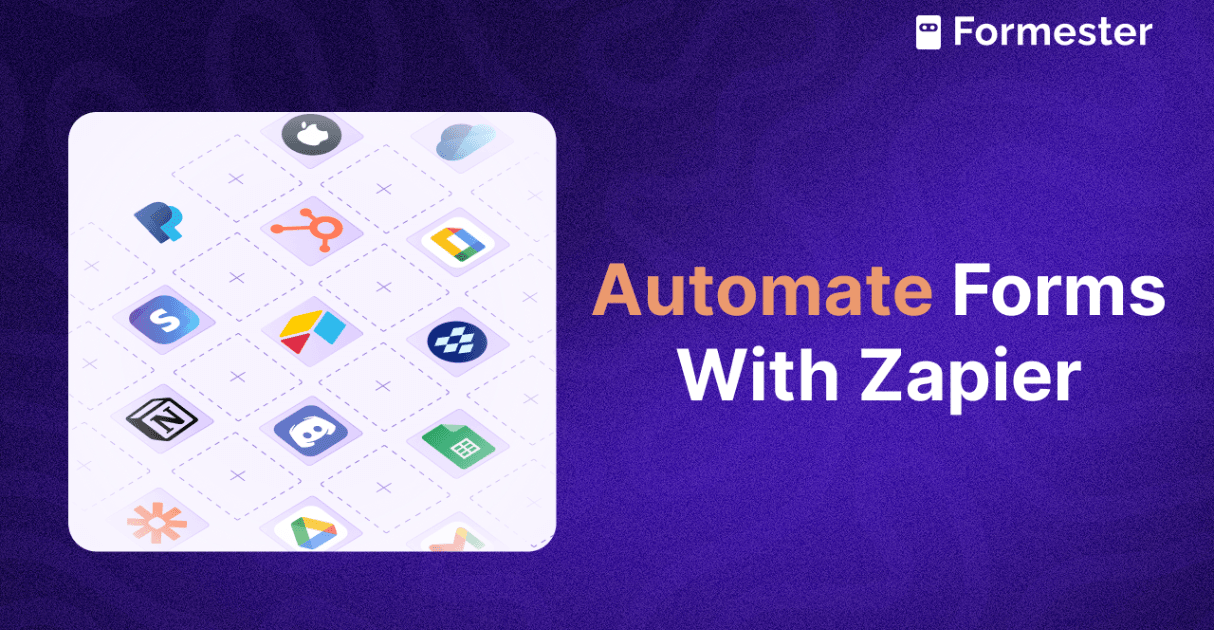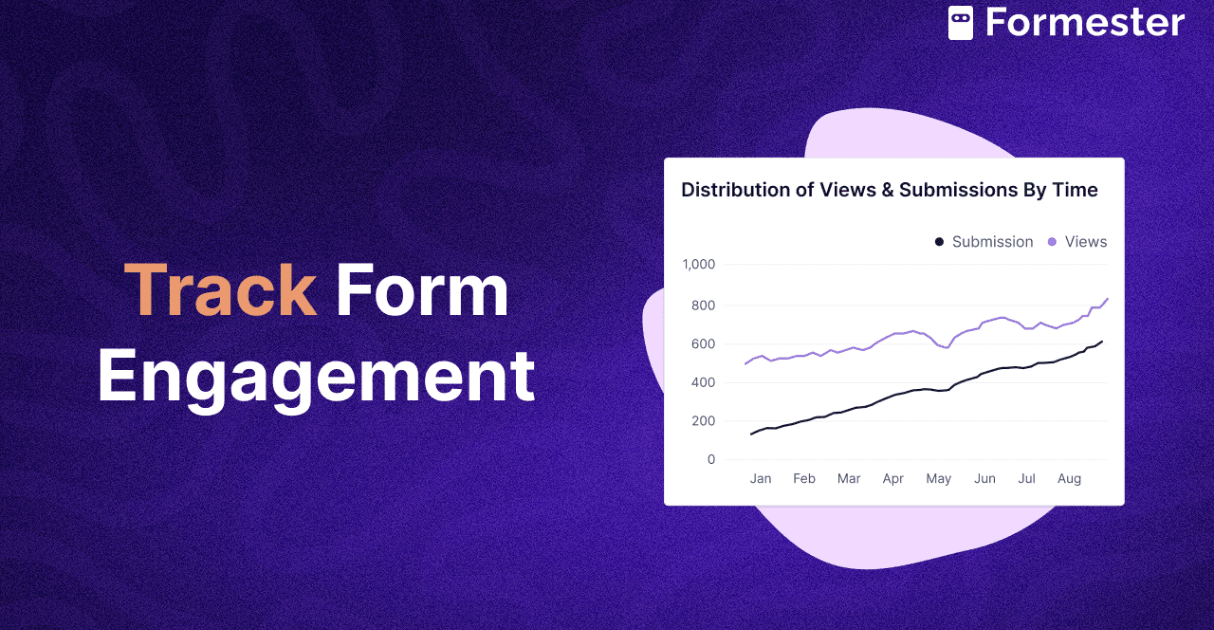How to SetUp Online Registration for an Event
Organizing an event can be exciting, but managing registrations manually is stressful, time-consuming, and prone to errors.
Event registration forms make it easier to sign up for conferences, workshops, webinars, and fitness classes. They save time and improve the experience for attendees and organizers.
In this guide, we will cover what you need to set up online event registration. We will discuss best practices, common mistakes, and step-by-step instructions. You will also find expert tips to make your event planning and execution smooth.
What is an Online Event Registration Form?
An online event registration form is a tool. It collects personal information from people. These people are signing up for an event, membership, or service. We use the captured data to track attendees, manage ticket sales, segment audiences, and plan logistics efficiently.
Common Use Cases for Event Registration Forms
Event planning: Capture attendee details for conferences, workshops, and webinars.
Membership signups: Gyms, clubs, and organizations can track members and ticket types.
School enrollment: Collect student information, parent contacts, and grade levels.
Virtual events: Gather participant emails for webinar links and online sessions.
Purpose: Gather and organize participant information efficiently while providing attendee engagement opportunities.
Why Online Event Registration is Essential
Event organizers are increasingly moving away from spreadsheets and paper forms because manual registration is inefficient and error-prone. Using event registration platforms or event registration software provides several benefits:
1. Efficiency and Automation
Manual processes are slow and require extra staff. Event management software automates data collection, confirmation emails, payment processing, and follow-up email campaigns, saving hours of work.
2. Better Attendee Experience
Mobile-friendly, fast forms with clear instructions reduce friction and make registration easy. Instant confirmations and follow-up emails improve attendee engagement and increase participation.
3. Secure Payments and Ticketing
Integrated event ticketing features allow attendees to select ticket types, apply promotional codes, and pay directly through the form. This keeps the process simple and secure.
4. Compliance and Consent
Collecting GDPR consent, displaying terms, and tracking privacy preferences ensures your event stays legally compliant while respecting participants’ data.
5. Real-Time Insights
Event management platforms offer live dashboards. These help organizers track registrations, watch ticket sales, and change strategies when needed.
Key Elements of a Successful Event Registration Form
Creating an event registration form is more than adding a few fields. Here are the essential components:
Basic Attendee Information
Name, email, phone number, and company/organization (if applicable)
Supplementary Information
Job title, department, address, or membership history
Special Requirements
Dietary restrictions, accessibility needs, or accommodation requests
Event Preferences
Session choices, workshops, or add-ons
Terms and Conditions / Privacy Consent
Checkbox confirming agreement with terms and privacy policies
Payment Option and Ticketing
Securely collect fees or donations, select ticket types, and apply promotional codes
Confirmation Messages and Communication
Send confirmation emails and follow-up email campaigns to boost attendance
Event Check Features
Include QR code scanning or check-in options to manage event check efficiently
Common Mistakes to Avoid When Building Event Registration Forms
Even simple registration forms can fail if not designed properly. Avoid these mistakes:
Asking for too much information
Only request the data you truly need. Long forms can discourage registrants.
Poor layout or design
Ensure the form flows logically, start with basic info and progress to advanced questions.
Unclear instructions
Include an introduction explaining how to fill out the form and which fields are required.
Ignoring mobile users
Optimize your form for mobile devices, most people register via smartphones.
Neglecting accessibility
Use proper labels for screen readers, include alt text for images, and ensure contrast and readability.
Step-by-Step Guide to Setting Up Online Event Registration
Here’s a complete workflow to set up an online event registration system that delivers results.
Step 1: Define Your Form’s Purpose and Length
Start by deciding what information you need and how many questions are necessary. Too many fields can overwhelm participants, while too few can leave you without actionable insights.
Pro Tip: Allow respondents to save progress and return later if your form collects detailed information.
Step 2: Choose the Right Event Registration Platform
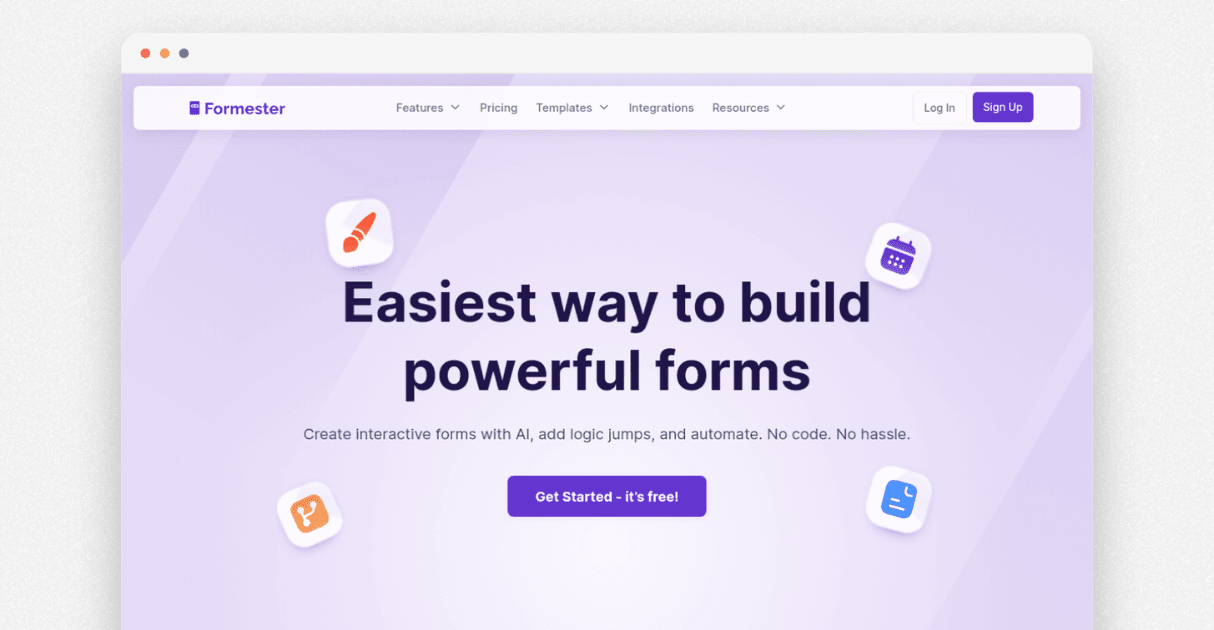
Pick a tool that allows customization options, automation, secure payments, and analytics. Formester is an ideal event registration software, enabling event planners to build mobile-friendly, branded registration forms quickly.
Limit responses per user to avoid duplicates
Use conditional logic for group registrations or tiered pricing
Add custom branding and colors to match your event
Explore what more you can do with Formester’s form builder.
Step 3: Set Up Clear Form Fields
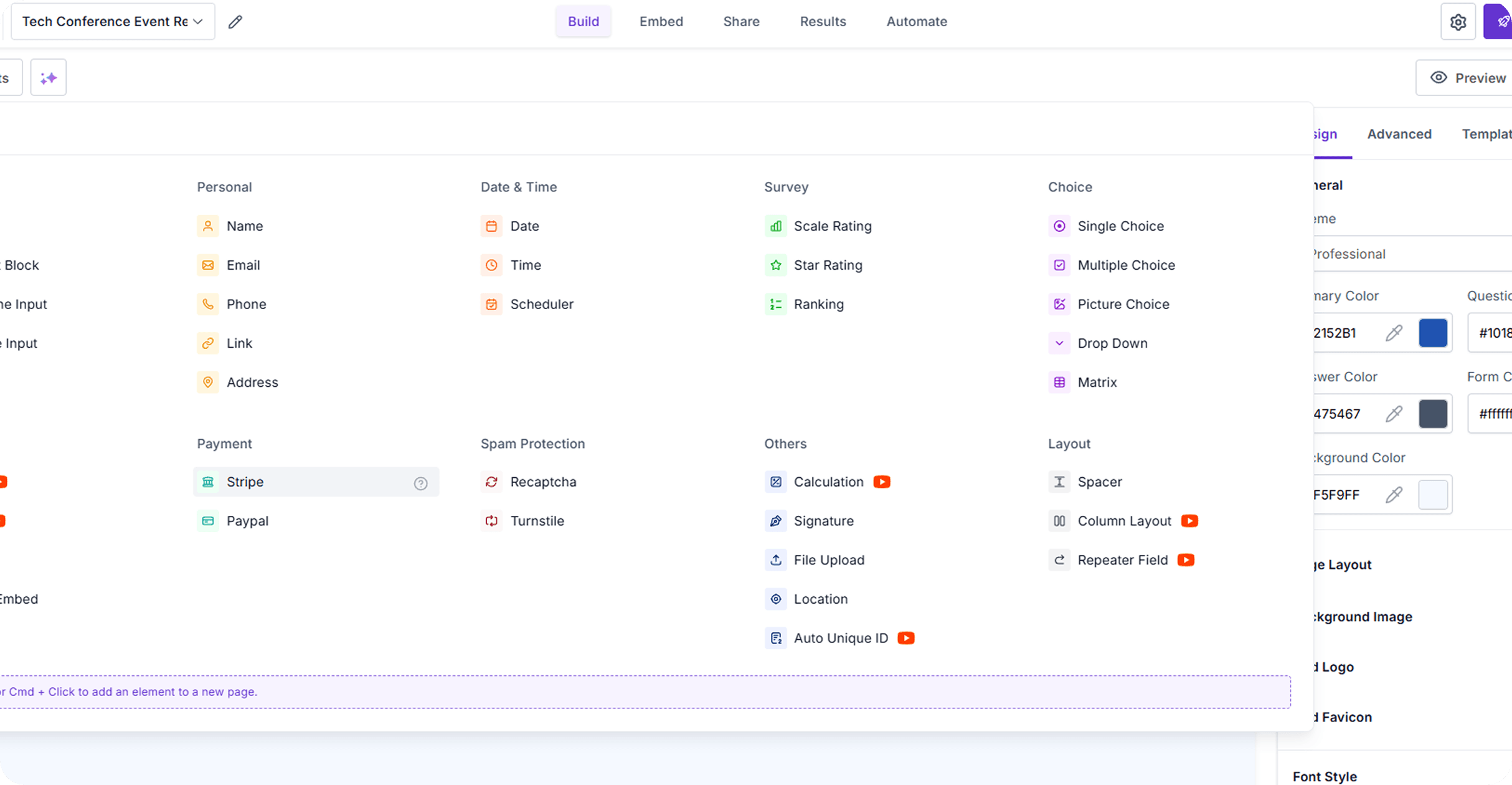
Use straightforward language for each field.
Include examples to guide users (e.g., “Enter your full name as shown on ID”).
Use drop-downs, radio buttons, or checkboxes to make selection easier.
Pro Tip: Conditional logic can simplify the experience. For example, only show dietary preferences if the attendee selects “attending lunch.”
Step 4: Add Payment Option and Event Ticketing
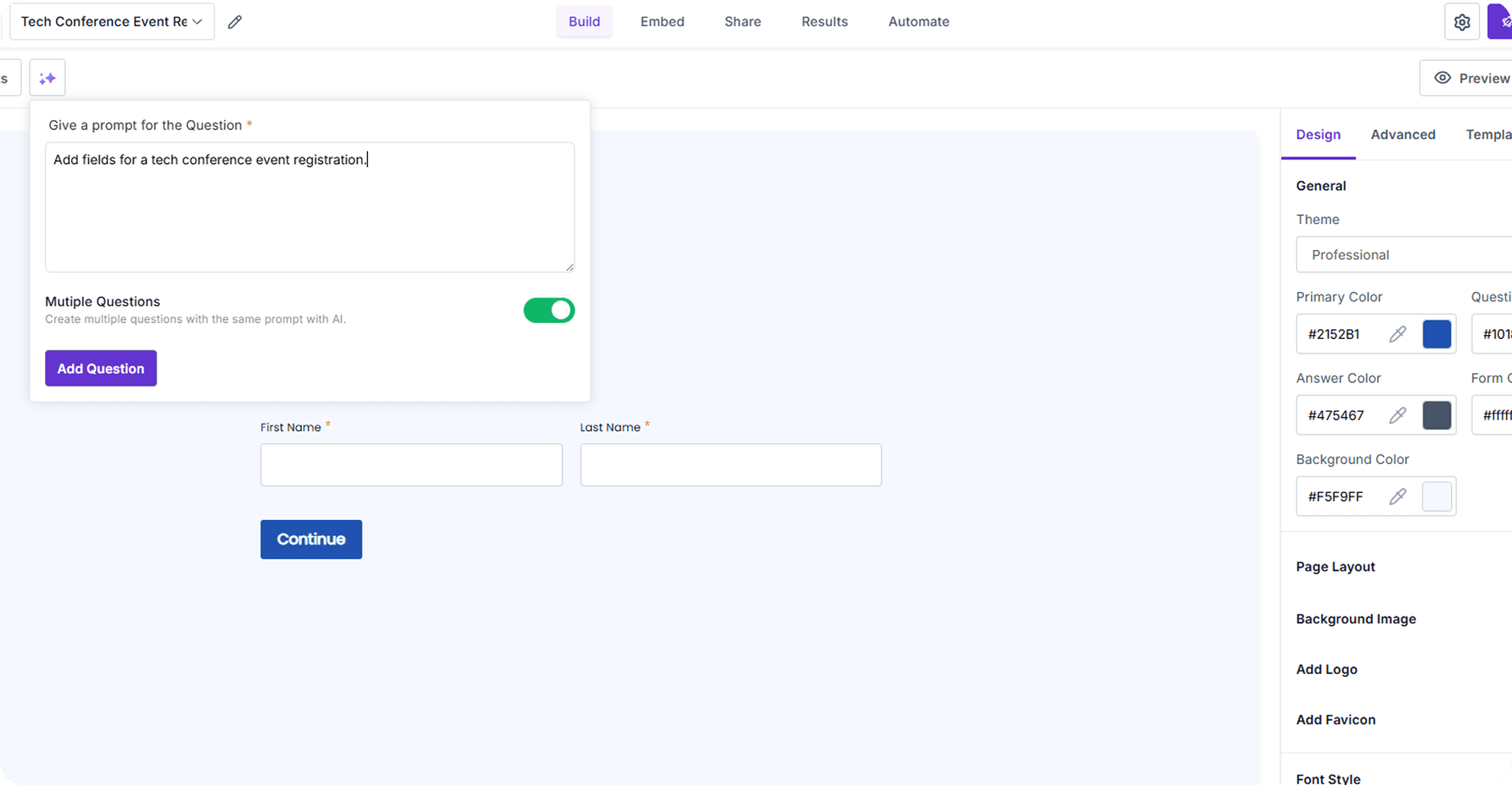
If your event charges a fee, integrate event registration software with secure payment gateways like Stripe or PayPal. Include multiple ticket types and allow promotional codes for discounts.
Pro Tip: Use your event management software to track ticket sales in real time and avoid overselling.
Step 5: Include Confirmation and Automated Communication
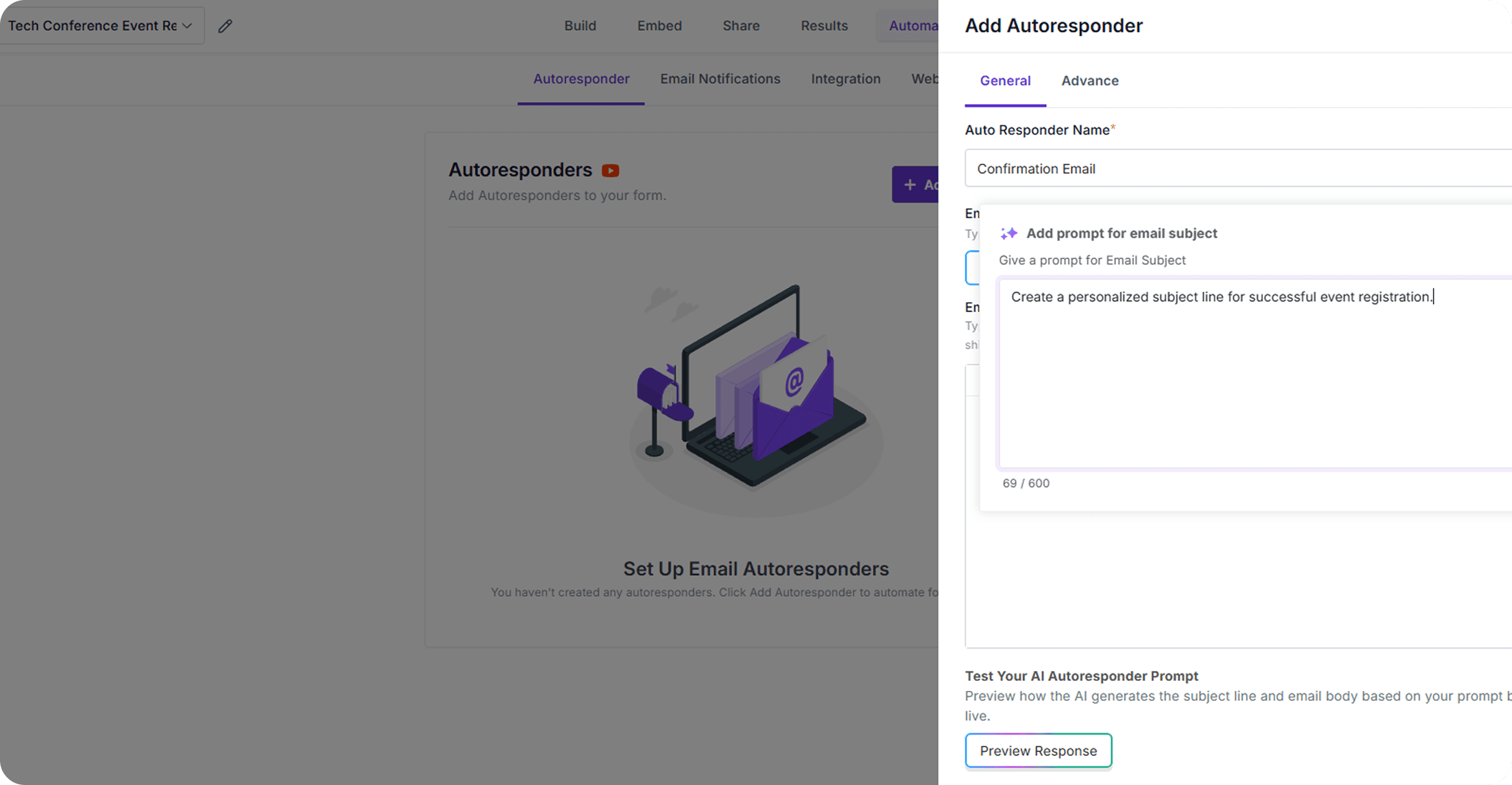
Display a thank-you message or redirect attendees to an event page after submission.
Send instant confirmation emails with registration details and payment receipts.
Schedule follow-up email campaigns to reduce no-shows and boost attendee engagement.
Step 6: Make Your Form Mobile-Friendly and Accessible
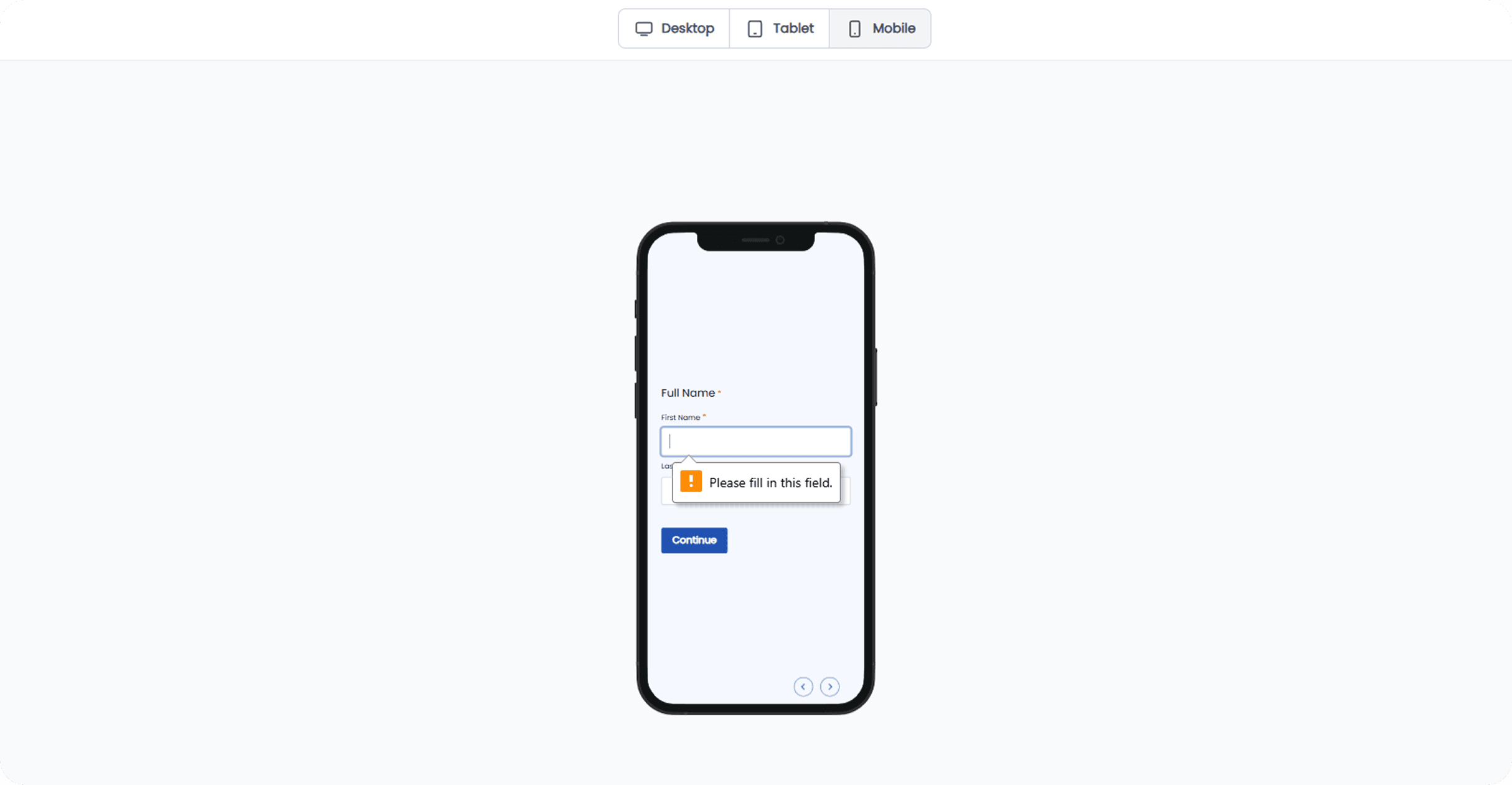
Ensure your form looks good on all screen sizes.
Use high-contrast colors, readable fonts, and properly labeled fields.
Provide alt text for images and mark required fields clearly.
Step 7: Embed Your Form for Maximum Reach
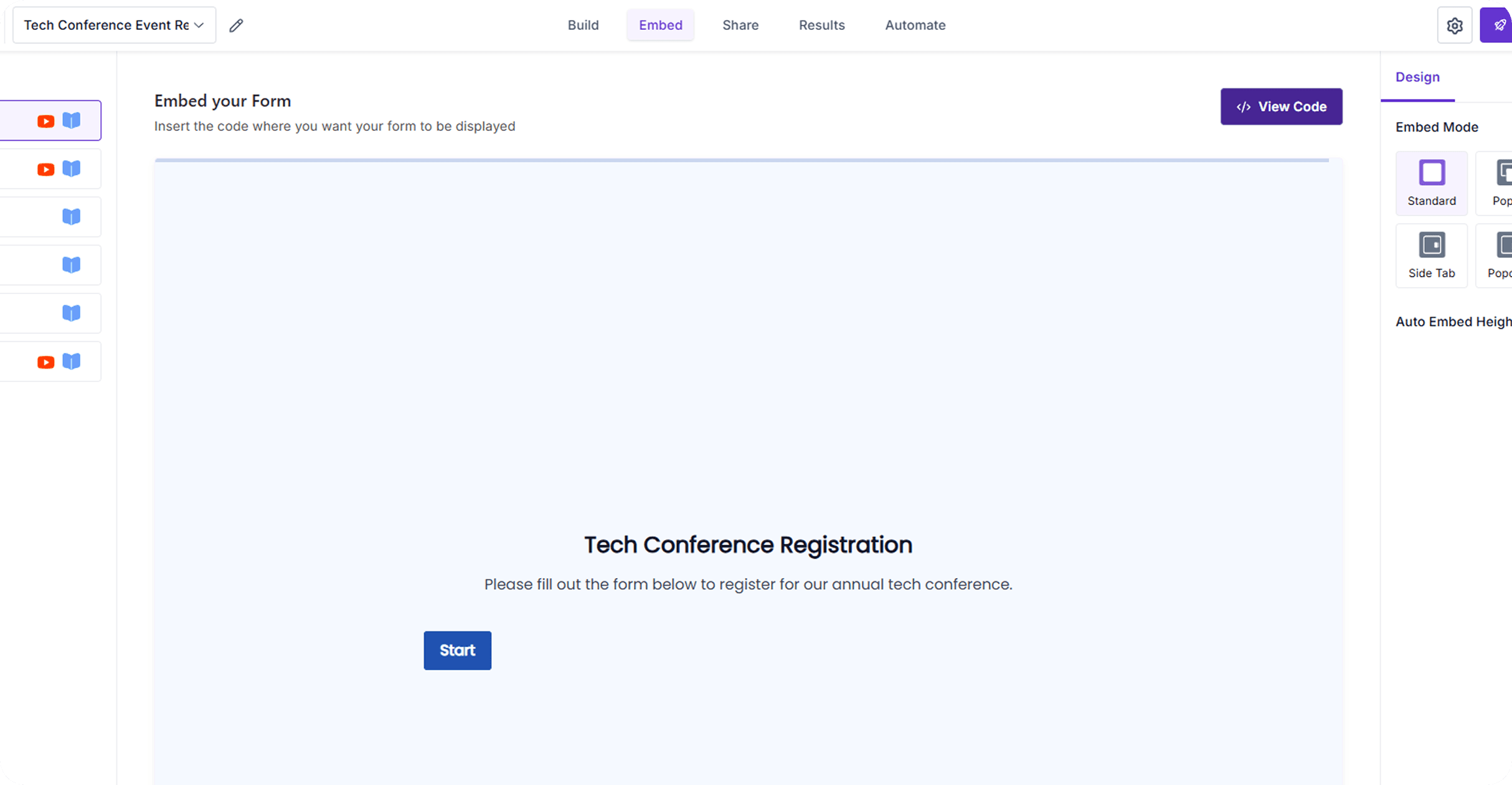
Website: Embed directly on your event page to capture registrations immediately.
Emails: Embed the first question or link in newsletters or invitations.
Pro Tip: Embedded forms improve response rates and increase conversions for ticket sales.
Event Registration Form Templates You Can Use
Pre-built templates save time and provide structure. Here are some common examples for event planners:
Conference Registration Form
Collect attendee details, session preferences, and payment directly.
Virtual Event Registration Form
Capture emails to send webinar or online meeting links.
Workshop or Seminar Form
Track attendee questions, session preferences, and special requests.
Gym Membership Form
Manage membership plans, trial sign-ups, and ticket types.
School Registration Form
Simplify student enrollment with fields for grades, student ID, and parent contact info.
Sports Registration Form
Track players’ experience, positions, health limitations, and team assignments.
Job Fair Registration Form
Collect resumes, company interests, and session participation preferences.
Why Formester is Ideal for Online Event Registration
Formester goes beyond basic registration forms by combining ease of use, automation, analytics, and security. With Formester, you can:
Build your form in seconds using AI.
Customize your form with branding and design options.
Limit responses and prevent duplicates Limit quiz responses.
Automate confirmation emails and follow-up campaigns.
Integrate payment options and manage ticketing.
Formester saves time, reduces errors, and provides a seamless attendee experience that improves attendee engagement and boosts ticket sales.
Best Practices for Event Registration Forms
Keep it short and focused.
Use mobile-friendly design.
Include clear instructions and field examples.
Automate communication with confirmation emails and email campaigns.
Ensure secure payments and GDPR compliance.
Use real-time analytics to refine event planning.
Include event check features to track attendees efficiently.
Using these practices helps attendees register easily. It also gives event organizers the data and tools they need for successful events.
Conclusion
Setting up an online event registration form is no longer optional, it’s a must for modern event planners. By combining automation, secure payments, mobile-friendly design, and analytics, you can improve efficiency, reduce errors, and deliver a professional attendee experience.
With a strong event management platform like Formester, you can make registration forms that are quick and flexible. You can also fully brand them. Plus, it automates tasks like sending confirmations, reminders, and selling tickets.
Start creating your online event registration form today. This will help make your next event easy and enjoyable for everyone.
